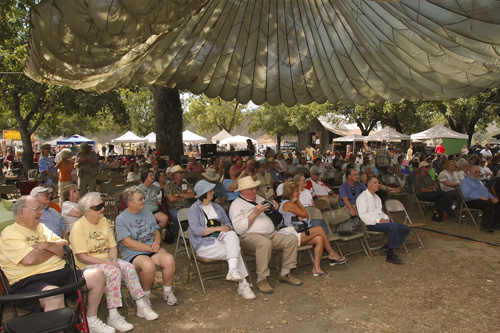- Tom Philpott
- Posted On
Military Update: DOD to spend $250 million repairing on-base public schools
The catch is that these schools, though part of local school districts, are on stateside bases and 94 percent of their students are military children.
There are 160 public schools on stateside bases, evidence of a bygone era when the only way to send military children to racially integrated schools was to build them on base. Other public schools are on bases because local communities lacked means to ensure military kids got a quality education.
All of these public schools on base were at one time under control of the Department of Education.
Twenty are still “owned” by the Department of Education even though all are run now by local school districts, explained Robert Gordon, deputy assistant secretary of defense for military community and family policy.
The feeling on Capitol Hill is that military families suffer enough stress, with multiple war deployments of parents, that they shouldn’t have to watch public-run schools on base deteriorate because local school budgets have been hit hard by a deep recession and slow economic recovery.
So as part of the fiscal 2011 defense appropriations bill, Congress took the unprecedented step of adding a quarter of a billion dollars to be used to repair, renovate or replace schools previously thought to be the sole responsibility of local school systems and local taxpayers.
Working with local education agencies, the $250 million will be aimed at 30 or fewer schools whose facilities are rated by DoD engineering teams as “failing” due to rundown conditions or inadequate capacity, or as “poor” both in physical condition and in limited space, Gordon said.
More than half of schools found to be in most need of renovation are on rural Army bases including Fort Sill, Okla., Fort Bliss, Texas, Fort Polk, La., and Fort Riley, Kan. Public schools in need also are on Joint Base Lewis-McChord, Wash., Naval Support Activity, Norfolk, Va., Edwards Air Force Base, Calif., and Wheeler/Schofield Army Airfield, Hawaii and other bases.
Here’s a link to a full list of the schools, where red and yellow bars indicate facility conditions of “failing” or “poor” and over capacity greater than 30 percent or 16 percent: http://cs.mhf.dod.mil/content/dav/mhf/QOL-Library/Project%20Documents/MilitaryHOMEFRONT/Leadership/Public%20Schools%20on%20Military%20Installations%20Priority%20List.pdf.
An assessment that place base schools into lower tiers of disrepair is concerning but not surprising, said Candace Wheeler, deputy director of government relations for the National Military Family Association. A lot of public schools on base are just very old, she said.
“Although many need upgrading or renovating, that doesn’t speak to the quality of education going on inside,” Wheeler added. “Many of them are doing an excellent job of educating our military children.”
Gordon said quality of education in these schools varies by district, as is true across the country. A point he preferred to emphasize is that every school on a military base is safe to attend, even those rated as failing.
“We don’t put our kids in unsafe schools,” Gordon said.
Wheeler said NMFA feel it’s time for public schools on base to be a “shared responsibility” of DoD and local districts. They are, after all, “on their installations [and] educating military children.”
In setting aside $250 million, Congress made “a very good start,” she said. NMFA hopes that isn’t viewed as a one-and-done appropriation.
DoD did not seek money to repair public schools on base and doesn’t plan to, Gordon suggested. But the $250 million is now “part of a larger strategic blueprint to increase quality education for our military children.”
He doesn’t know how far the money will go to address needed repairs. Defense officials won’t start allocating cash to projects until they meet with school districts to learn more about school needs.
“I can tell you that on the list of 160 schools, almost 50 percent of them are in good condition and have no capacity issues,” Gordon said.
When we noted that half of the schools were not in good shape, Gordon acknowledged that the condition of facilities could impact learning. But more important factors, he said, are “are good teachers, good curriculum, good principals [and] good superintendents.”
Wheeler made a similar point.
More than a million of 1.2 million military school-age children are educated off base, mostly in public schools, and unaffected by these plans.
The House Appropriations Committee first sounded an alarm on physically deteriorating schools for military children in 2008, focusing then on 195 schools operated by the Department of Defense Education Activity. DoDEA schools educate 86,000 military children in 12 foreign countries, seven states and the U.S. territories of Puerto Rica and Guam.
DoD teams rating the physical conditions at DoDEA schools gave a “failing” grade to 40 percent and an “under-maintained” rating to another 39 percent. Those statistics were shared with Defense Secretary Leon Panetta in a July letter from a dozen U.S. senators who urged him to work with Congress to help give military children the schools they deserve.
Defense officials say they are in the second year now of a six-year plan to repair or replace 134 DoDEA schools in poor or failing physical condition. The fiscal 2012 budget request seeks $550 million to “recapitalize” 15 schools, a figure that hints at how far $250 million might go toward reviving 30 or so public schools on base.
Those are schools with “urgent” needs, Gordon said.
“We do take this seriously,” Gordon said about conditions at these schools. “But we feel our kids are getting [a good] education.”
Meanwhile, DoD continues to assess the quality of education at DoDEA schools, reviewing curriculums to measure strength of studies in technology, mathematics and language skills, and weighing the effect of frequent deployments by parents on their children’s education, Gordon said.
To comment, send e-mail to This email address is being protected from spambots. You need JavaScript enabled to view it. or write to Military Update, P.O. Box 231111, Centreville, VA, 20120-1111.
Follow Lake County News on Twitter at http://twitter.com/LakeCoNews, on Tumblr at www.lakeconews.tumblr.com, on Facebook at http://www.facebook.com/pages/Lake-County-News/143156775604?ref=mf and on YouTube at http://www.youtube.com/user/LakeCoNews.











